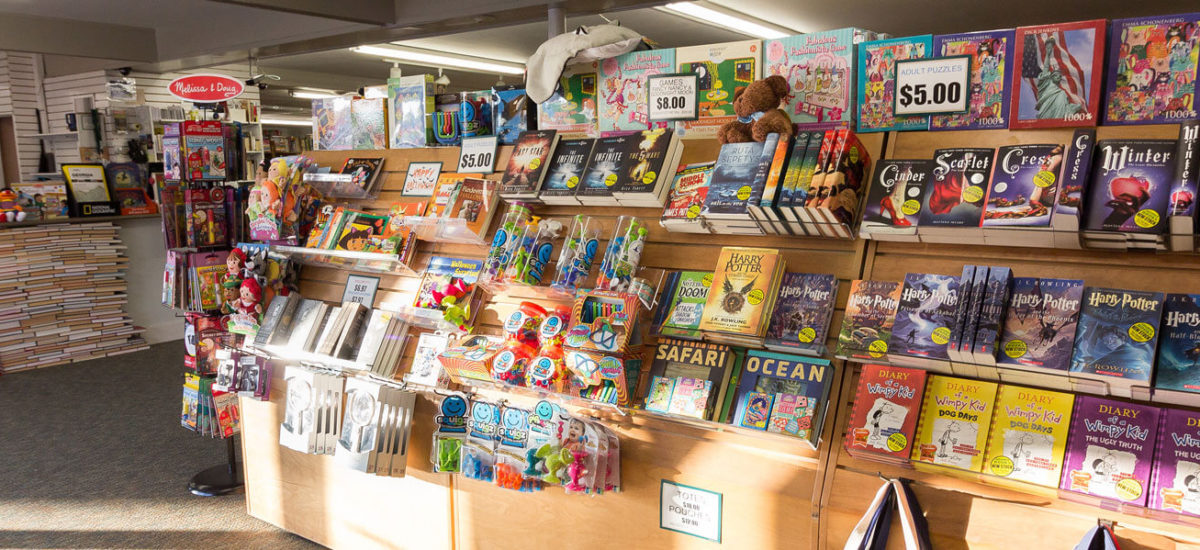Do Customers Still Buy Closeouts Of Books? You Would Be Surprised.

In the first half of 2020, unit sales of print books surprised many in the industry by posting a 2.9% increase over the same period in 2019 at outlets that report to NPD BookScan, overcoming a slump in sales in early spring following the onset of the Covid-19 pandemic. Many surplus liquidators used to buy books by the gaylord but when Amazon began selling online they backed off and put the brakes on buying closeouts. Liquidation buyers don’t buy as many closeout books as they used to because of digital print. Children’s books still sell and coloring books do well, but closeout novels and fantasy books have slowed down in the overstock market Print sales finished 2020 up 8.2% over 2019, and that strong performance continued into 2021, with units jumping 18.5% in the first six months over the comparable period in 2020. With the exception of the juvenile nonfiction category, all the major publishing categories had double-digit sales increases in the first half of the year. Backlist had the strongest gains, up 21.4%, but frontlist sales were also solid, rising 12.4%. When publishers sell excess inventory they often put their books up for sale by asking overstock buyers to make bids.
The increase in the first half of 2021 was led by the adult fiction category, where units rose 30.7%. Adult nonfiction unit sales rose 15.6% in the first half of the year, driven by increases across most subcategories. Closeouts of books are popular in discount and dollar stores because they are sold for a fraction of the original published prices. Surplus liquidators specialize in buying discontinued inventory from publishers, and then sell excess inventory to closeout websites, wholesale liquidators and discount stores. During the pandemic, liquidation buyers were exceptionally busy due to the increase in closeouts on the market and businesses shutting down 3PL warehouses and disposing of excess merchandise.
Sales of self-help books had the largest gain, up 32.1%, followed by business and economics books, up 24%, and home and gardening and general nonfiction, which both had increases of just over 22%. Only two areas had sales declines: humor, where sales fell 17.4%, and crafts/hobbies/antiques/games, where sales dipped 1.2%. When publishers need to get rid of excess inventory they turn to liquidation buyers who can purchase in bulk and take all or a large portion of the inventory at one time. Surplus liquidators can purchase by the pallet and even the truckload if the prices are low enough. In 2021 the #1 title in the book category was The Hill We Climb by Amanda Gorman, the book version of the poem she read at President Biden’s inauguration, which sold more than 455,000 copies.
Book sales should finish 2021 on a good note, but a number of factors could mean softer sales in early 2022, said Kristen McLean, executive director and industry analyst for books at NPD BookScan, during a webinar on third-quarter sales. Though sales of print books dipped in the quarter ended October 2 compared to a year ago, sales were still up 11% in the first nine months of the year and are up 90 million units over 2019. When books are sold as closeouts they are discounted by publishers and distributors in an effort to move extra inventory out of the warehouse. 3PL warehouse costs have become so expensive that inventory must be liquidated when sales fall below a given level. As it gets closer to the end of the year, more companies will have inventory liquidation sales to reduce excess inventory. This can be in the form of offering discounts to existing customers, listing inventory on closeout websites, or contacting liquidation buyers to sell everything in one fell swoop. There are different ways a company can sell excess inventory so it pays to examine all possibilities. Closeout brokers are also an option if a company wants to shop their inventory to see who can make the highest bid.
Supply chain issues have contributed to the continuing higher sales of backlist books, as some new titles have been delayed in getting to market. Through the first nine months of the year, backlist accounted for 69% of unit sales, up from 67% a year ago, and McLean doesn’t see frontlist bouncing back in the immediate future. She is concerned that if too many titles are delayed and supply chain problems continue into the new year (which nearly everyone believes will happen), publishers will be faced with excess inventory that stores will have a difficult time finding room for. If this happens, publishers may have to liquidate some inventory to make room in the warehouse for new titles coming in. Closeout merchandise has always been a component of doing business, but with the existing supply chain issues it has become a bigger piece of the puzzle. Wholesale liquidators were busy during 2021, but with all the late containers coming in Q1 2022, it may be a busy time to buy closeouts and liquidate merchandise.
Merchandise USA buys excess merchandise from Amazon FBA sellers, importers with too much inventory, and 3PL warehouses shutting down operations. We have been in the overstock liquidation clearance business more than 35 years.



